DI-TERT-BUTYL HYDRAZODICARBOXYLATE
Synonym(s):tert-Butyl hydrazodiformate
- CAS NO.:16466-61-8
- Empirical Formula: C10H20N2O4
- Molecular Weight: 232.28
- MDL number: MFCD00015000
- EINECS: 240-512-3
- SAFETY DATA SHEET (SDS)
- Update Date: 2025-07-24 18:13:44
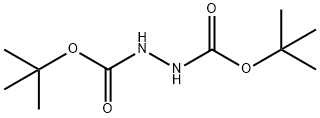
What is DI-TERT-BUTYL HYDRAZODICARBOXYLATE?
Chemical properties
White powder
The Uses of DI-TERT-BUTYL HYDRAZODICARBOXYLATE
Di-tert-butyl hydrazodicarboxylate, is used as starting reagent during the four-step synthesis of the aminobicyclopyrazolone hydrochloride. It was used as reagent during Pd-catalyzed amination reactions of halo-pyridine substrates.
The Uses of DI-TERT-BUTYL HYDRAZODICARBOXYLATE
Di-tert-butyl hydrazodiformate was used as starting reagent during the four-step synthesis of the aminobicyclopyrazolone hydrochloride. It was used as reagent during Pd-catalyzed amination reactions of halo-pyridine substrates.
What are the applications of Application
Di-tert-butyl hydrazodiformate is a hydrazine substrate
Synthesis Reference(s)
Journal of the American Chemical Society, 82, p. 2725, 1960 DOI: 10.1021/ja01496a018
General Description
Di-tert-butyl hydrazodiformate acts as hydrazine substrate during the preparation of protected pyridylhydrazine derivatives.
Properties of DI-TERT-BUTYL HYDRAZODICARBOXYLATE
| Melting point: | 123-126 °C (dec.)(lit.) |
| Boiling point: | 294.6±9.0 °C(Predicted) |
| Density | 1.064±0.06 g/cm3(Predicted) |
| storage temp. | Keep in dark place,Sealed in dry,Room Temperature |
| form | Powder or Crystalline Powder |
| pka | 8.73±0.43(Predicted) |
| color | White |
| Water Solubility | Insoluble in water. |
| BRN | 1794023 |
Safety information for DI-TERT-BUTYL HYDRAZODICARBOXYLATE
| Signal word | Warning |
| Pictogram(s) |
 Exclamation Mark Irritant GHS07 |
| GHS Hazard Statements |
H315:Skin corrosion/irritation H319:Serious eye damage/eye irritation H335:Specific target organ toxicity, single exposure;Respiratory tract irritation |
| Precautionary Statement Codes |
P261:Avoid breathing dust/fume/gas/mist/vapours/spray. P264:Wash hands thoroughly after handling. P264:Wash skin thouroughly after handling. P271:Use only outdoors or in a well-ventilated area. P280:Wear protective gloves/protective clothing/eye protection/face protection. P302+P352:IF ON SKIN: wash with plenty of soap and water. P305+P351+P338:IF IN EYES: Rinse cautiously with water for several minutes. Remove contact lenses, if present and easy to do. Continuerinsing. |
Computed Descriptors for DI-TERT-BUTYL HYDRAZODICARBOXYLATE
DI-TERT-BUTYL HYDRAZODICARBOXYLATE manufacturer
JSK Chemicals
New Products
4,4-Difluoropiperidine hydrochloride tert-butyl 9-methoxy-3-azaspiro[5.5]undecane-3-carboxylate Indole Methyl Resin N-Isopropylurea N,N-Dicyclohexylcarbodiimide(DCC) MELDRUMS ACID 5-METHYLISOXAZOLE-4-CARBOXYLIC ACID Magnessium Bis glycinate Zinc ascorbate 1-bromo-2-butyne 2-acetamidophenol 9(10H)-anthracenone Erythrosin B, 4-Piperidinopiperidine 2-((4-morpholinophenylamino) (methylthio) methylene) malononitrile 2,4-dihydroxybenzaldehyde 3-(4-morpholinophenylamino)-5-amino-1H-pyrazole-4-carbonitrile Methyl 2-methylquinoline-6-carboxylate 2,6-dichloro-4-nitropyridine 4-Bromo-2-chlorobenzonitrile 2-(benzylamino)acetic acid hydrochloride 4-(tert-Butoxycarbonylamino)but- 2-ynoic acid 3,4-dihydro-2H-benzo[b][1,4]dioxepine 1-Phenyl-1-cycloprppanecarboxylicacidRelated products of tetrahydrofuran
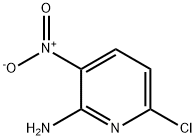
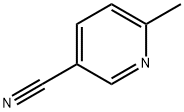
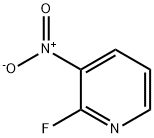
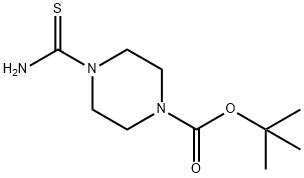

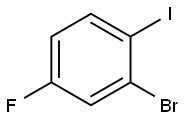
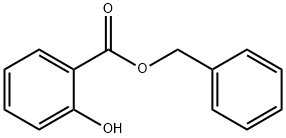

You may like
-
 16466-61-8 1,2-Hydrazinedicarboxylic acid,di-tert-butyl ester 98%View Details
16466-61-8 1,2-Hydrazinedicarboxylic acid,di-tert-butyl ester 98%View Details
16466-61-8 -
 Di-tert-Butyl-1,2-hydrazodicarboxylate 98% (GC) CAS 16466-61-8View Details
Di-tert-Butyl-1,2-hydrazodicarboxylate 98% (GC) CAS 16466-61-8View Details
16466-61-8 -
 Di-tert-butyl hydrazodicarboxylate 98% CAS 16466-61-8View Details
Di-tert-butyl hydrazodicarboxylate 98% CAS 16466-61-8View Details
16466-61-8 -
 Di-tert-butyl Hydrazodicarboxylate CAS 16466-61-8View Details
Di-tert-butyl Hydrazodicarboxylate CAS 16466-61-8View Details
16466-61-8 -
 Di-tert-butyl hydrazodicarboxylate CAS 16466-61-8View Details
Di-tert-butyl hydrazodicarboxylate CAS 16466-61-8View Details
16466-61-8 -
 Di-tert-butyl hydrazodiformate CAS 16466-61-8View Details
Di-tert-butyl hydrazodiformate CAS 16466-61-8View Details
16466-61-8 -
 16466-61-8 98%View Details
16466-61-8 98%View Details
16466-61-8 -
 DI-Tert-BUTYL HYDRAZODIFORMATE chemical, Purity: 99%, CAS Number: 16466-61-8View Details
DI-Tert-BUTYL HYDRAZODIFORMATE chemical, Purity: 99%, CAS Number: 16466-61-8View Details
16466-61-8
